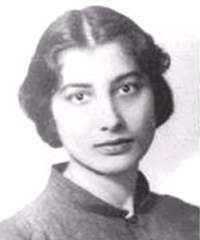A bronze bust of Indian-origin British ‘spy princess’ Noor Inayat Khan, who worked in France during World War II before being tortured and shot by the Germans, is being unveiled today in Gordon Square Gardens here, near the house where she lived as a child.
It is said to be the first such memorial in Britain dedicated to a Muslim and the first in honour of an Asian woman.
Khan, posthumously awarded the George Cross for her work in France and for revealing nothing of use to her interrogators despite being tortured by the Gestapo for 10 months, is a direct descendant of Tipu Sultan, the renowned Tiger of erstwhile princely state of Mysore who refused to submit to British rule and who was killed in battle in 1799.
The event marks the end of several years of campaign by the Noor Inayat Khan Memorial Trust headed by her biographer Shrabani Basu, to revive the memory of the forgotten war heroine.
The campaign has received the support of British Prime Minister David Cameron and several MPs and Peers as well as from eminent women like film maker Gurinder Chadha, stage artist Nina Wadia and sitarist Anoushka Shankar.
Basu, founder of the Noor Memorial Trust and author of her biography – Spy Princess – said she became interested in Khan’s story from “pure curiosity” about how an Indian woman could have been involved in the theatre of war in Europe.
“As I started researching her life, I realised she was a Sufi who believed in non-violence and religious harmony and had yet volunteered to be in the frontline,” Basu, a journalist, said.
“Khan – code named Madeline and shot dead at Dachau concentration camp, was the proud descendant of a ruler who had died fighting the British, her own father was a strong nationalist, and Noor was a great admirer of Pandit Jawaharlal Nehru and Mahatma Gandhi.
“Though she believed firmly in Indian independence, she was focused and knew that it was important to fight the war against fascism”.
Khan was the last essential link with London after mass arrests by the Gestapo destroyed the Special Operations Executive (SOE)’s spy network in Paris.
As her spy circuit collapsed, her commanders urged her to return, but she refused to abandon her French comrades without communications.
For three months, she single-handedly ran a cell of spies across Paris, frequently changing her appearance and name until she was eventually captured.
The bust is being installed on land owned by the University of London, close to the Bloomsbury house where the spy princess lived as a child in 1914 and where she returned while training for the SOE during the World War II.
source: http://www.dnaindia.com / Daily News & Analysis / Home> India> Report / Place: London, Agency: PTI / Thursday, November 08th, 2012
